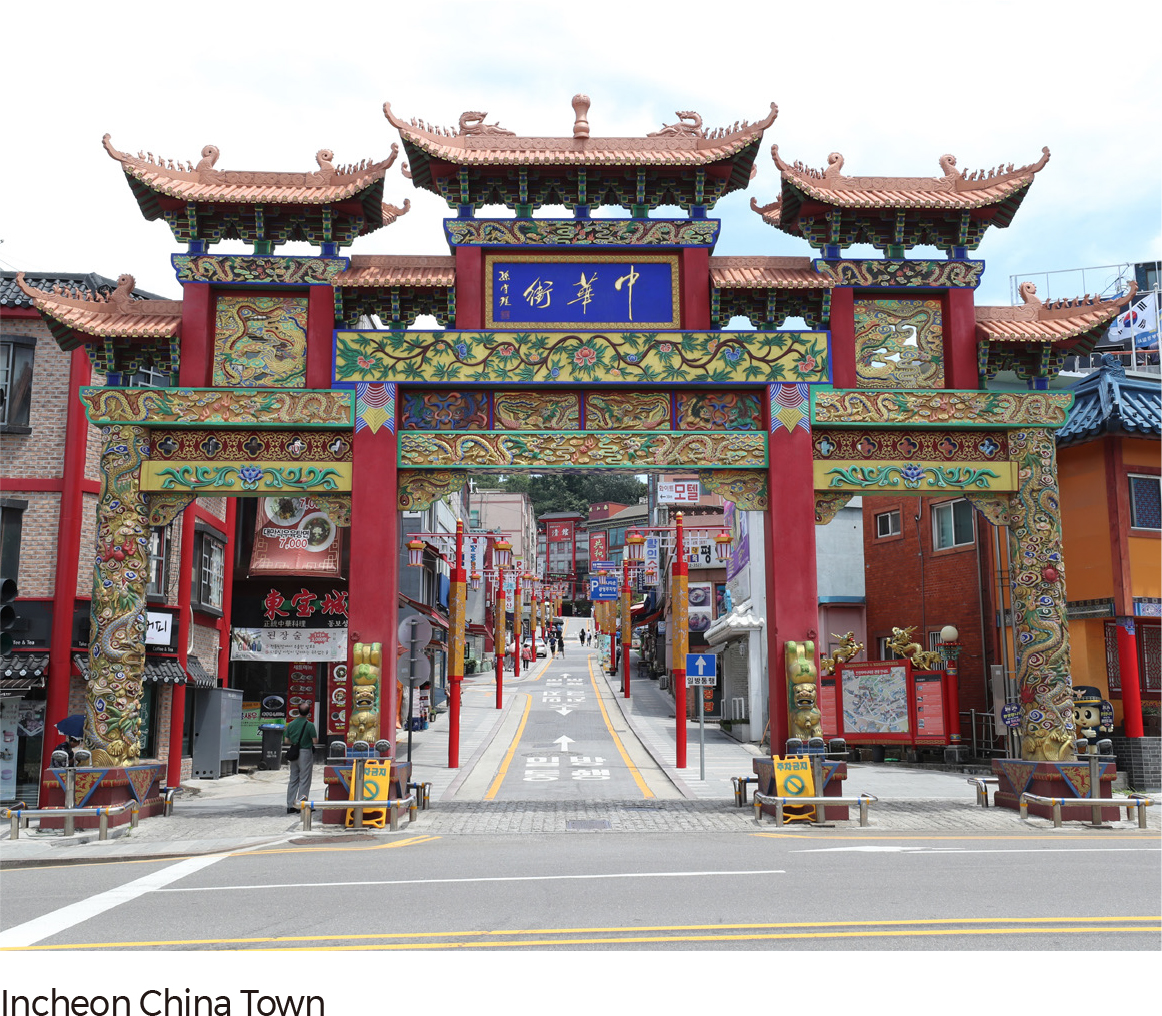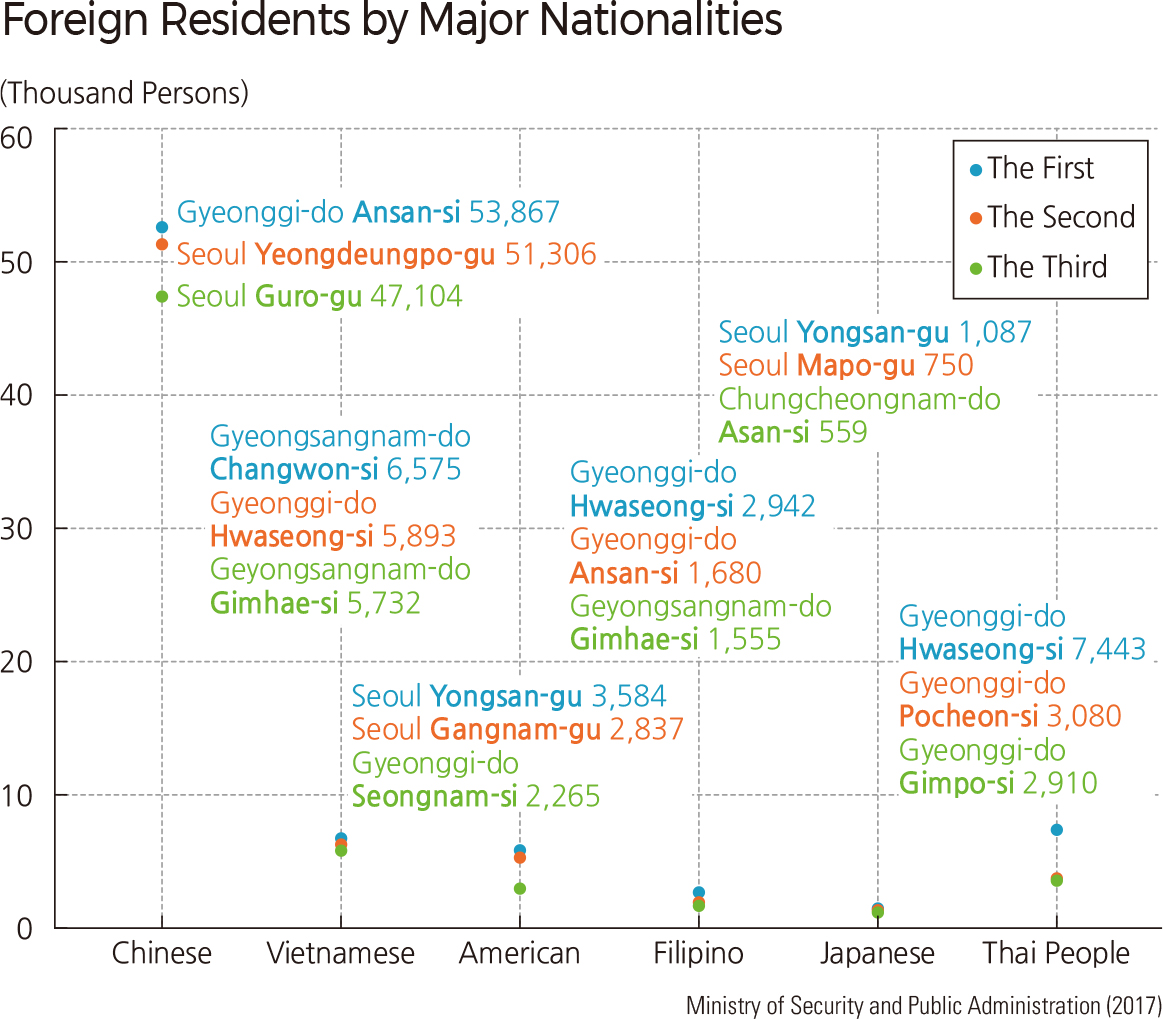English I 2019
The geographical distribution of foreign residents in Korea is uneven. Looking at the national distribution by their country of origin, Korean-Chinese are concentrated in the southwestern part of Seoul and industrial districts in Gyeonggi-do, Gyeongsangnam-do, and Gyeongsangbuk-do. On the other hand, non-Korean-Chinese, including a relatively high proportion of international students, are prominent in university cities such as Northern Seoul, Cheonan-si, and Gyeongsan-si in Gyeongsangbuk-do. Vietnamese, Filipinos, and Thais show a similar distribution pattern, living on the outskirts of industrial districts. In particular, non-Korean Chinese and Vietnamese (with a relatively high proportion of them being marriage immigrants) are found in rural areas.
On the other hand, the distribution of Americans is quite different, mainly in the Gangnam area of Seoul and Bundang in Seongnam-si. In general, foreign workers from more developed countries tend to engage in professional jobs, living close to the foreign firms, while foreign workers from less developed countries engage in unskilled labor jobs and live in industrial cities. Foreign residents today can be divided into unskilled laborers, marriage immigrants, international students, and professional workers. The purpose of staying, correlated with the country of origin, tends to determine where they live in Korea.
Among the foreign residents, males account for approximately 990,000, and females account for approximately 870,000. However, in Seoul, where low-order service industries are heavily developed, the proportion of women among foreign residents is higher. In rural areas, where the proportion of marriage immigrants is high, the proportion of women is also higher than in other areas. |



